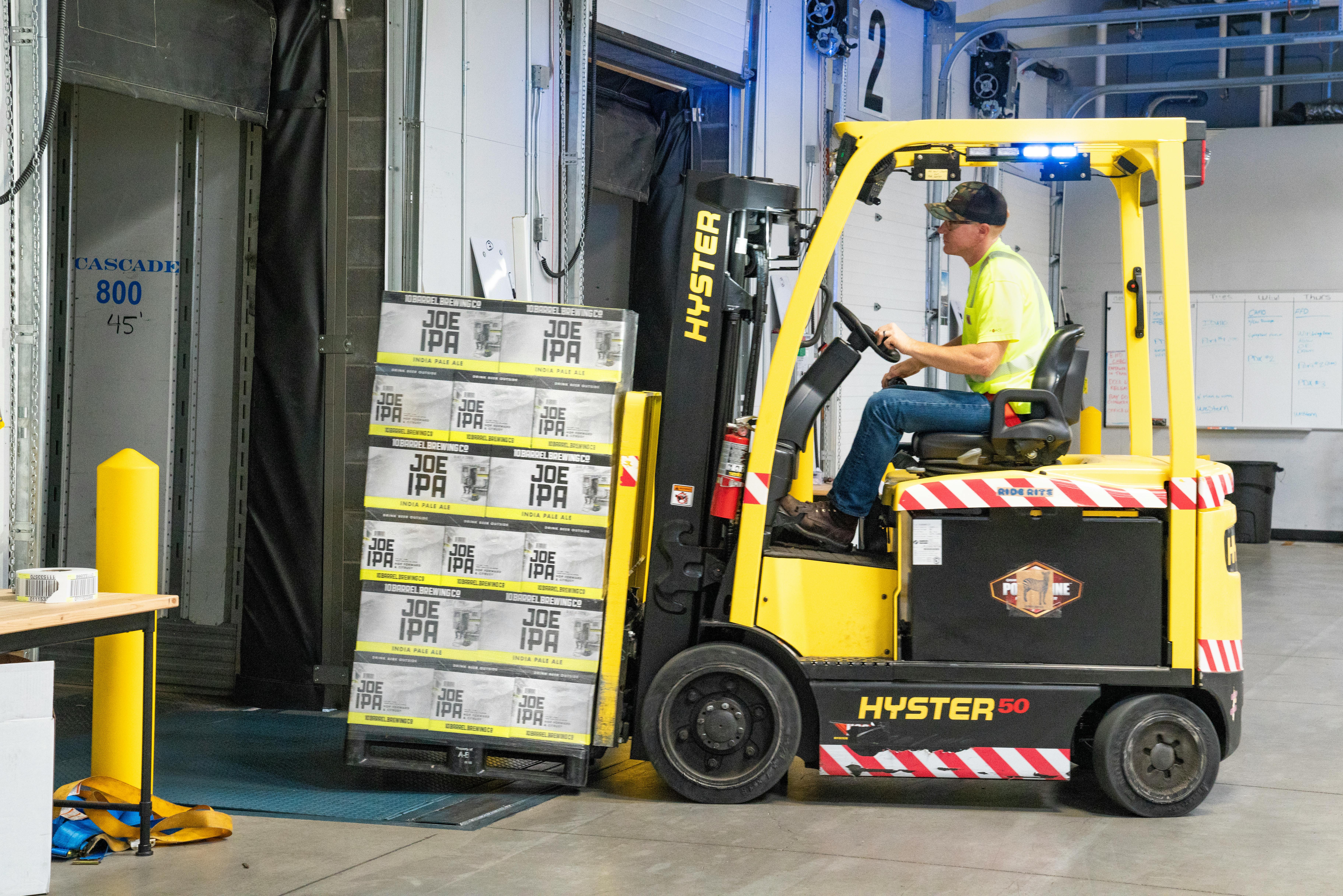
What is Normal Backwardation? Keynes' Theory Explained
Discover John Maynard Keynes' theory of normal backwardation and how risk premiums compensate speculators in commodity futures markets. Essential economics explained.
In the 1930s, legendary economist John Maynard Keynes posed a provocative question about commodity markets: Why would speculators trade futures contracts if, on average, they didn't earn a positive return? His answer—the theory of normal backwardation—revolutionized our understanding of futures markets and revealed a fundamental economic relationship between hedgers and speculators that persists to this day.
Normal backwardation isn't just another market structure like the backwardation and contango we observe daily—it's a theoretical framework explaining why futures markets exist at all, who profits from them, and what drives the relationship between current and future prices. Understanding Keynes' theory provides deep insights into market mechanics and helps explain why commodity investors can potentially earn risk premiums simply by providing liquidity to hedgers.
Normal Backwardation at a Glance
Keynes' Theory
Futures < Expected Spot
Hedgers pay speculators risk premium
Speculator Reward
Positive Roll Yield
Compensates for bearing risk
Key Insight: Hedgers "pay" speculators through below-market futures prices
What is Normal Backwardation?
Normal backwardation, as theorized by John Maynard Keynes in 1930, proposes that futures prices should typically trade below the expected future spot price. This discount represents a risk premium that hedgers (commodity producers) pay to speculators in exchange for taking on price risk.
The Core Theory Explained
Keynes' theory rests on several key insights:
- Hedgers dominate the sell side: Commodity producers want to lock in prices for future production, creating natural selling pressure in futures markets
- Speculators provide liquidity: For hedgers to sell futures, someone must buy them—speculators fill this role
- Risk transfer requires compensation: Speculators won't take on price risk without expected profit, so futures trade below expected future spot prices
- Convergence creates speculator profit: As futures approach expiration, they converge to spot prices. If futures were below expected spot, convergence generates profits for long speculators
The Mathematical Relationship:
Futures Price < Expected Future Spot Price
The difference between these prices is the risk premium that compensates speculators for bearing price risk that hedgers want to avoid.
Distinguishing Normal Backwardation from Backwardation
It's crucial to distinguish between two related but different concepts:
Backwardation (Market Structure):
- Observable market condition: Spot price > Futures price
- Can be measured directly from market prices
- Changes daily based on supply-demand conditions
- Visible in futures curves
Normal Backwardation (Economic Theory):
- Theoretical proposition: Futures price < Expected future spot price
- Cannot be directly observed (expected future spot is unknowable)
- Describes long-term market equilibrium
- Explains why futures markets exist
A market can show observed contango (futures > spot) while still exhibiting normal backwardation (futures < expected future spot) if expected future spot is even higher than current futures.
Keynes' Reasoning: Why Normal Backwardation Should Exist
The Hedging Pressure Hypothesis
Keynes argued that commodity producers face natural price risk. A farmer planting corn in spring doesn't know what price they'll receive at fall harvest. An oil company investing millions in drilling doesn't know future oil prices. This uncertainty creates economic risk that threatens profitability and business viability.
To manage this risk, producers want to hedge—lock in prices for future production. In futures markets, hedging means selling futures contracts. But if everyone wants to sell futures, who will buy them?
The Speculator's Role and Compensation
Speculators provide the necessary counterparty to hedgers. But speculators aren't charities—they need incentive to take on the price risk hedgers want to shed. That incentive comes through a risk premium embedded in futures prices.
The Economic Exchange:
- Hedgers: Accept below-market futures prices to eliminate uncertainty and protect their business
- Speculators: Accept price risk in exchange for buying futures at discounted prices, expecting profit when prices converge
This is the risk premium that Keynes identified: futures prices below expected future spot prices, compensating speculators for taking the opposite side of hedgers' trades.
Why Hedgers Accept Discounted Prices
Keynes recognized that producers would rationally accept futures prices below expected future spot because:
- Cash flow certainty: Knowing future revenue allows better planning and investment
- Reduced financial stress: Protection against price collapse preserves business viability
- Leverage and lending: Banks more willing to lend when future revenue is hedged
- Risk aversion: Many producers prefer certain lower profits to uncertain higher potential profits
The discount they accept is essentially an insurance premium—paying speculators to take on price risk just as you pay insurance companies to take on other risks.
How Normal Backwardation Generates Speculator Returns
The Convergence Mechanism
Normal backwardation creates systematic profit opportunities for speculators through convergence:
- Speculators buy futures at prices below expected future spot (the discount is the risk premium)
- Time passes and futures approach expiration
- Convergence occurs: Futures prices must equal spot prices at expiration
- Profit realized: If the expected spot price materializes, speculators bought below that price and profit from convergence
Example:
- Current spot corn: $6.00/bushel
- Expected spot at harvest (6 months): $6.20/bushel
- 6-month futures price: $5.90/bushel (30 cents below expected)
- Risk premium: $0.30/bushel
A speculator buying futures at $5.90 expects to profit when prices converge to spot at expiration. If spot reaches $6.20 as expected, the speculator gains $0.30/bushel—the risk premium for providing hedging liquidity.
Roll Yield as Risk Premium Realization
For commodity investors holding futures continuously, the risk premium manifests as positive roll yield. In normal backwardation:
- Futures trade below expected future spot
- As contracts approach expiration, they converge upward toward spot
- Rolling positions means selling expiring contracts at higher prices and buying distant contracts at lower prices
- This generates positive roll yield—the practical realization of the risk premium
Keynes' theory thus predicts that long-only commodity futures strategies should earn positive returns over time, compensating investors for providing hedging services to producers.
Does Normal Backwardation Actually Exist? The Evidence
Empirical Support
Decades of research have tested Keynes' theory with mixed but generally supportive results:
Evidence Supporting Normal Backwardation:
- Energy markets: Crude oil and gasoline futures have shown positive excess returns over long periods, consistent with risk premium theory
- Agricultural commodities: Grains and livestock futures have exhibited positive returns to long positions, especially during supply-constrained periods
- Natural hedging pressure: Markets with predominant producer hedging (selling futures) tend to show backwardation more frequently
- Risk premium studies: Academic research has found statistically significant risk premiums in many commodity futures markets
Challenges and Complications
However, the empirical picture is more complex than simple normal backwardation:
Factors Complicating the Theory:
- Consumption hedgers: Not all hedging pressure comes from producers. Commercial consumers also hedge, creating buying pressure that offsets selling pressure
- Storage economics: The theory of storage provides an alternative explanation for futures curve shapes based on inventory levels and carrying costs
- Variable term structure: Markets don't consistently show backwardation; they alternate between backwardation and contango based on supply-demand conditions
- Precious metals exception: Gold and silver typically show contango, not backwardation, perhaps because they serve as financial assets rather than consumed commodities
- Period-specific returns: Risk premiums appear to vary over time, strengthening during stressed markets and weakening during abundant supply
Modern Understanding: Hedging Pressure Theory
Contemporary research has refined Keynes' theory into "hedging pressure theory," which recognizes:
- Net hedging pressure matters: The balance between producer hedging (selling) and consumer hedging (buying) determines curve shape
- Time-varying risk premiums: Risk premiums change with market conditions, not constant as simple normal backwardation suggests
- Multiple factors interact: Storage costs, convenience yield, and hedging pressure all influence term structure simultaneously
Why Normal Backwardation Matters for Different Market Participants
For Long-Term Commodity Investors
Risk Premium Harvesting:
If normal backwardation exists, long-only commodity futures strategies should earn positive risk-adjusted returns over time. This theoretical foundation supports commodity investing as an asset class:
- Diversification benefits beyond traditional stocks and bonds
- Risk premium compensation for bearing commodity price risk
- Potential inflation protection as commodities often rise with inflation
Practical consideration: Returns are highly variable and period-dependent. Some decades show positive risk premiums; others show negative returns dominated by negative roll yield during prolonged contango.
For Commodity Producers
Understanding the Hedging Cost:
Normal backwardation implies producers "pay" for hedging through accepting below-market futures prices. This cost should be weighed against benefits:
- Quantifiable trade-off: The discount in futures relative to expected spot represents the insurance premium paid
- Selective hedging decisions: When risk premiums are high (steep backwardation), hedging costs more; when low, hedging is cheaper
- Basis of economics: Understanding normal backwardation helps producers evaluate whether hedging makes economic sense for their situation
For Speculators and Traders
Theoretical Foundation for Long Bias:
Normal backwardation provides theoretical justification for maintaining long commodity exposure:
- Expected positive returns: Long positions should profit from risk premiums embedded in futures prices
- Convergence profits: As futures converge to spot, long positions benefit from upward convergence
- Roll yield opportunities: Markets in backwardation offer positive roll yield enhancing returns
Caveat: Risk premium is compensation for real risk—commodity prices are volatile, and losses are possible despite theoretical advantages.
For Academic and Market Analysts
Framework for Market Analysis:
Normal backwardation provides a lens for analyzing commodity market behavior:
- Identifying hedging pressure: Analyzing open interest by trader type reveals net hedging pressure
- Risk premium estimation: Comparing futures prices to spot price forecasts estimates implied risk premiums
- Market efficiency testing: Normal backwardation predicts systematic biases in futures prices, testable empirically
Real-World Applications and Examples
Example 1: Energy Complex Risk Premiums (2000-2015)
Observation: Crude oil and gasoline futures showed substantial positive returns to long positions over this period, significantly exceeding returns predicted by price changes alone.
Interpretation through Normal Backwardation: Oil producers consistently hedged future production by selling futures. This selling pressure pushed futures below expected future spot prices, creating risk premiums. Investors buying oil futures captured these premiums through positive roll yield as markets frequently traded in backwardation.
Result: Commodity index funds holding long oil futures positions earned returns consistent with Keynes' theory—compensation for bearing price risk that oil producers wanted to shed.
Example 2: Agricultural Markets Pre-Harvest
Observation: Agricultural futures often show backwardation before harvest as farmers hedge anticipated production.
Interpretation through Normal Backwardation: Farmers selling new-crop futures before planting or during growing season create hedging pressure. This pushes futures below expected harvest prices, embedding risk premium. Speculators buying these futures profit if harvest prices materialize as expected.
Lesson: Seasonal hedging pressure creates predictable risk premium patterns—normal backwardation manifesting in regular cycles.
Example 3: Precious Metals Deviation
Observation: Gold and silver typically trade in contango, not backwardation, with futures exceeding spot prices.
Why Normal Backwardation Doesn't Apply: Precious metals serve primarily as financial assets and stores of value rather than consumed commodities. There's little natural producer hedging pressure (mining companies often don't hedge). Without predominant selling pressure from hedgers, the risk premium mechanism breaks down.
Lesson: Normal backwardation applies most clearly to consumed commodities with natural producer hedging pressure, less to financial commodities like precious metals.
Example 4: Natural Gas Demand Hedging
Observation: Natural gas markets sometimes show contango despite being a consumed energy commodity.
Explanation: Natural gas has substantial demand-side hedging from utilities and power generators who buy futures to lock in costs. This buying pressure can offset or exceed producer selling pressure, reducing or eliminating the risk premium.
Lesson: Modern hedging pressure theory recognizes that net hedging (producers minus consumers) determines market structure, refining Keynes' original focus on producer hedging alone.
Criticisms and Limitations of Normal Backwardation Theory
Criticism 1: Ignores Storage Theory
The Challenge: The theory of storage provides an alternative explanation for futures curve shapes based on storage costs and convenience yield, without requiring risk premium assumptions.
Response: Modern understanding recognizes both theories explain different aspects: storage theory explains short-term curve fluctuations, while normal backwardation explains long-term average relationships and risk premiums.
Criticism 2: Assumes Speculators Are Risk-Neutral
The Challenge: Keynes' theory assumes speculators care only about expected returns, not risk. But if speculators are also risk-averse, they might demand even higher risk premiums, or avoid certain markets entirely.
Response: The theory can be extended to incorporate speculator risk aversion, with risk premiums compensating both for bearing price risk and for variance of returns.
Criticism 3: Doesn't Explain Time-Varying Term Structure
The Challenge: Normal backwardation predicts futures should typically be below expected spot, yet markets alternate between backwardation and contango continuously.
Response: The theory describes long-run average relationships, not moment-to-moment market structure. Short-term fluctuations reflect changing supply-demand, inventory levels, and hedging pressures that cause deviations from normal backwardation.
Criticism 4: Empirical Evidence Is Mixed
The Challenge: Some studies find positive risk premiums; others find zero or negative premiums depending on period and commodities studied.
Response: Risk premiums likely vary over time and across commodities based on hedging pressure intensity, speculator risk appetite, and market conditions. The theory identifies an economic mechanism that operates alongside other forces, not a universal law.
Key Takeaways
- Normal backwardation is Keynes' theory that futures prices trade below expected future spot prices
- The theory explains why futures markets exist: hedgers pay speculators risk premiums to take on price risk
- Hedging pressure drives the mechanism: predominant producer selling pushes futures below expected future spot
- Speculators earn risk premiums through convergence: buying discounted futures and profiting as they converge to spot
- Roll yield is the practical manifestation of risk premiums in continuously-held futures positions
- Empirical evidence is supportive but mixed: many commodities show positive risk premiums, but not universally or constantly
- Modern hedging pressure theory refines Keynes: net hedging (producers minus consumers) determines risk premiums
- Normal backwardation differs from observed backwardation: theoretical discount versus observable market structure
- The theory applies best to consumed commodities with natural producer hedging pressure
- Understanding the theory improves market interpretation: provides framework for analyzing futures curves and hedging behavior
Related Topics on SpotMarketCap
Conclusion
John Maynard Keynes' theory of normal backwardation remains one of the most elegant explanations for why futures markets exist and how they function. Nearly a century after he proposed it, the core insight endures: futures markets facilitate risk transfer from those who want to avoid it (hedgers) to those willing to bear it (speculators), with price discounts serving as the compensation mechanism.
The beauty of the theory lies in its simplicity and logic. Commodity producers face inherent price uncertainty that threatens their business stability. Speculators, unburdened by physical operations, can more easily bear this risk. The market creates a mutually beneficial exchange: producers gain certainty at the cost of accepting below-market prices, while speculators accept price risk in exchange for buying at discounts. Both parties benefit from this arrangement.
While empirical reality proves more complex than simple normal backwardation—with demand-side hedging, storage economics, and time-varying risk premiums all playing roles—the fundamental mechanism Keynes identified remains valid. Markets with predominant producer hedging pressure do tend to offer risk premiums to long speculators, manifesting as positive roll yield and excess returns over long periods.
For modern market participants, understanding normal backwardation provides crucial context for interpreting commodity futures behavior. When you see backwardation, you're not just observing a price relationship—you're witnessing the market's mechanism for allocating and compensating risk. When commodity investors earn positive returns, they're not simply "lucky"—they're being compensated for providing essential hedging services that enable commodity producers to operate with greater certainty.
Keynes gave us a framework for understanding that commodity markets aren't just about prices—they're about risk transfer, economic necessity, and the compensation required to make that transfer happen. His theory of normal backwardation reminds us that behind every futures contract lies a fundamental economic purpose: allowing those who produce commodities to focus on production while those willing to bear price risk earn premiums for doing so. That insight remains as relevant today as when Keynes first articulated it nearly a century ago.
Track Real-Time Asset Prices
Get instant access to live cryptocurrency, stock, ETF, and commodity prices. All assets in one powerful dashboard.
Related Articles

What is Convenience Yield? Why Storing Commodities Matters
Learn about convenience yield—the hidden value of holding physical commodities. Understand how it affects futures prices, backwardation, and commodity investment returns.

What is Basis in Commodity Trading? Spot-Futures Relationship Explained
Master the concept of basis in commodity trading—the critical difference between spot and futures prices. Essential knowledge for hedgers, traders, and investors.

What is Physical Settlement vs Cash Settlement in Commodities?
Understand physical delivery versus cash settlement in futures contracts. Learn how settlement methods affect traders, hedgers, and commodity market participants.